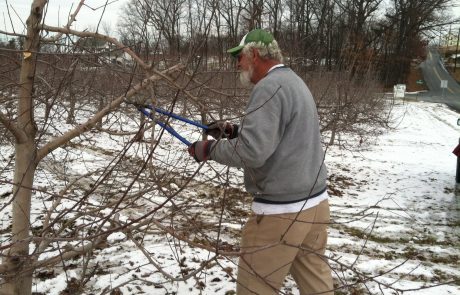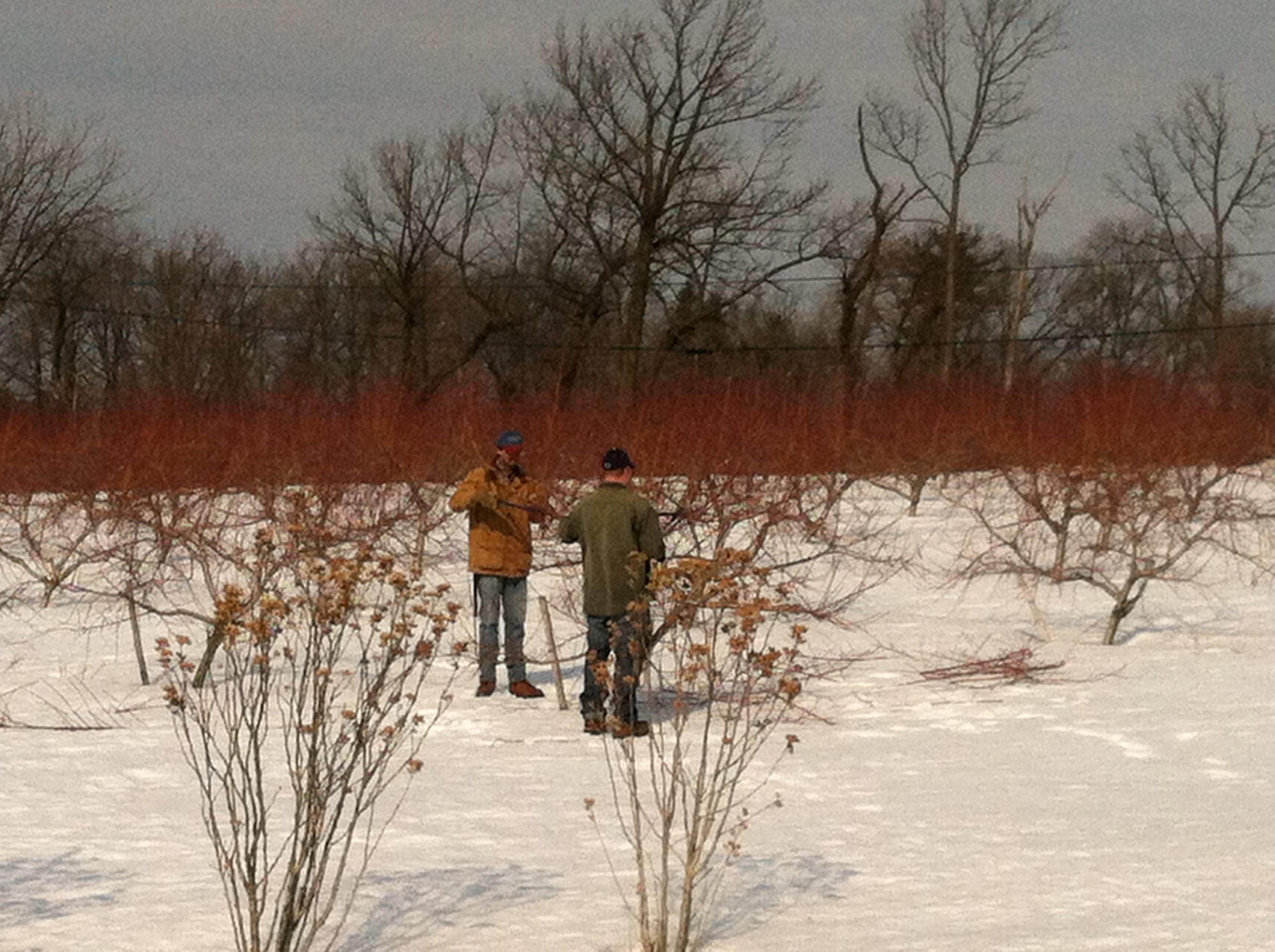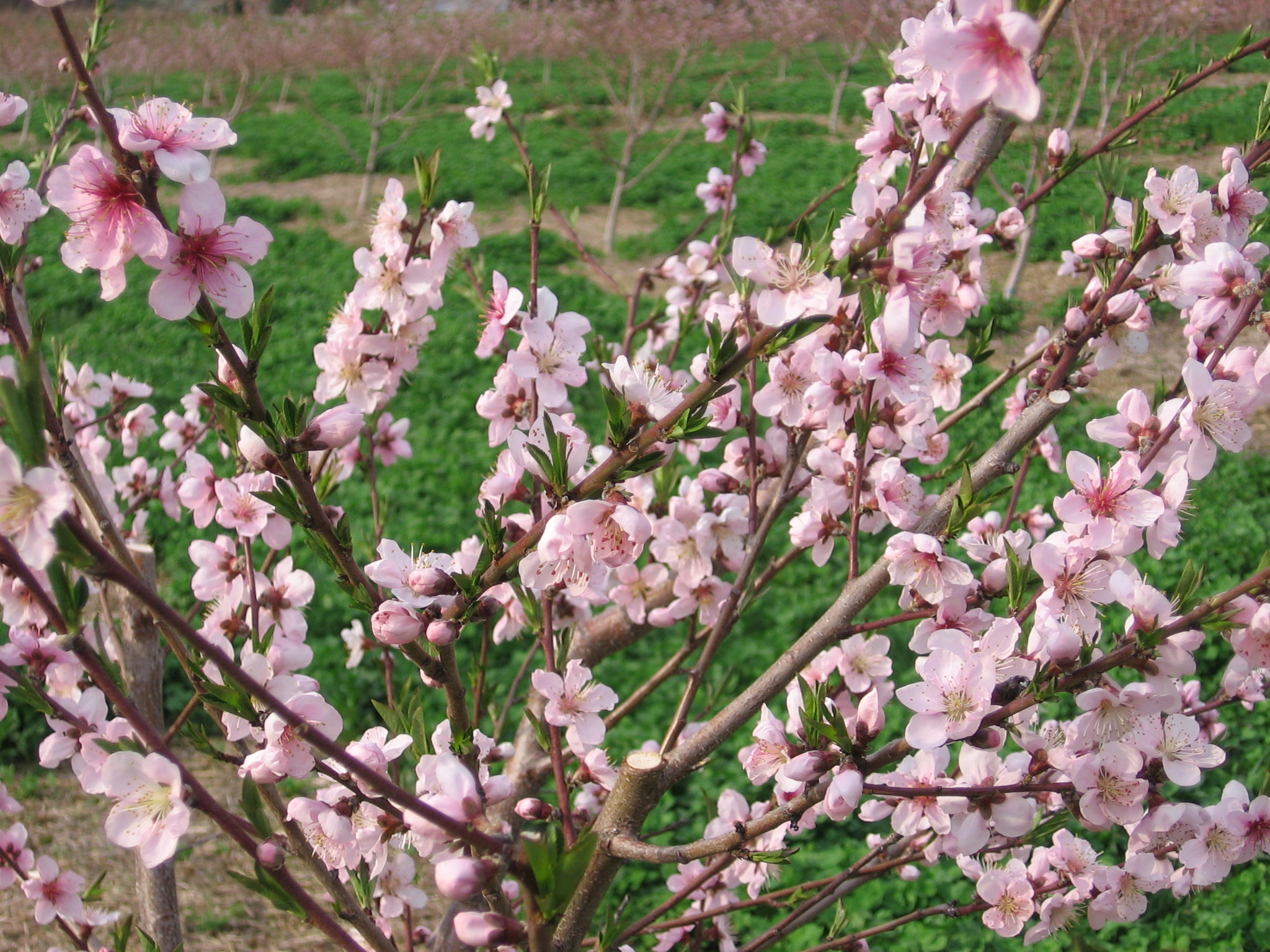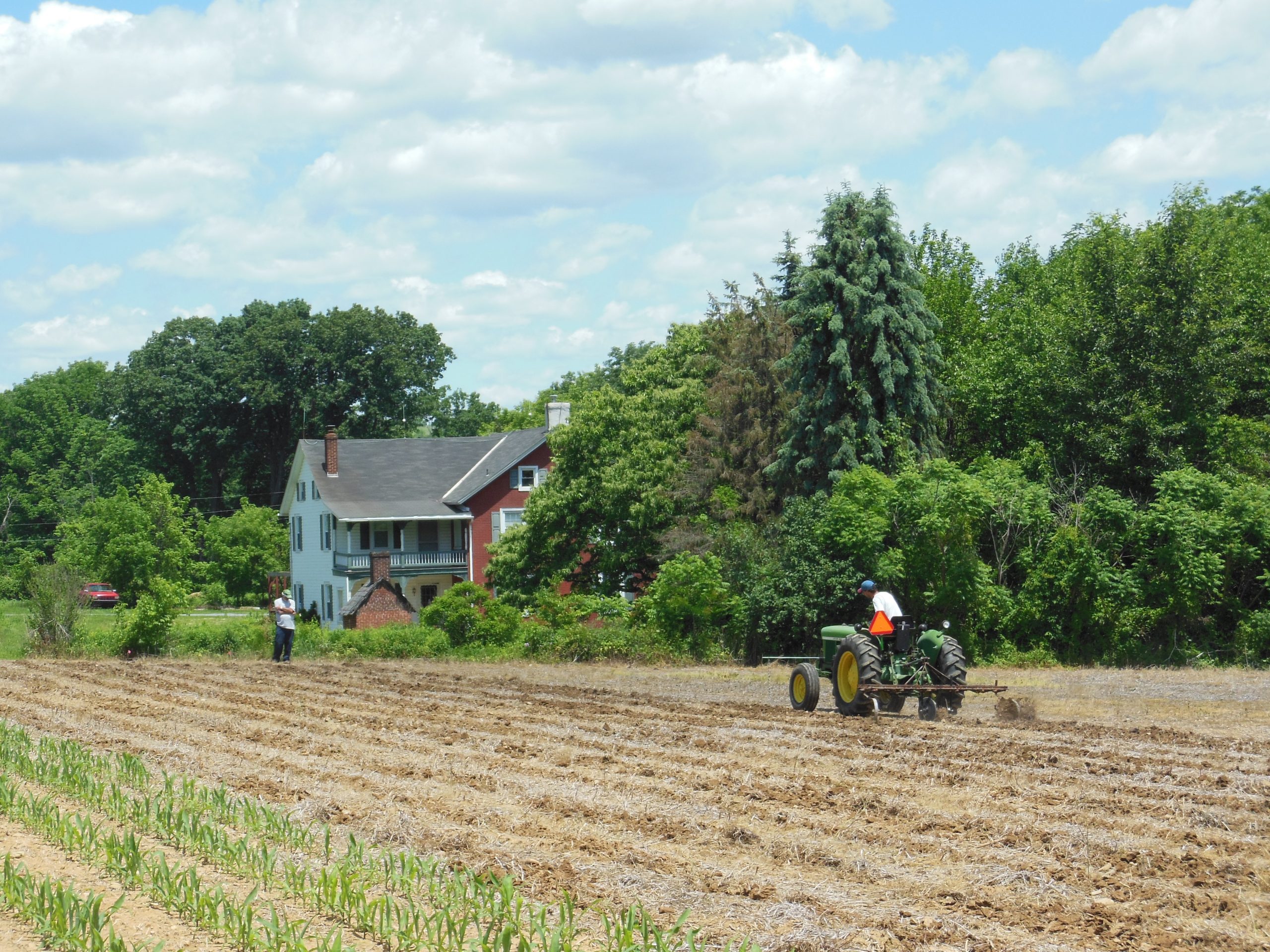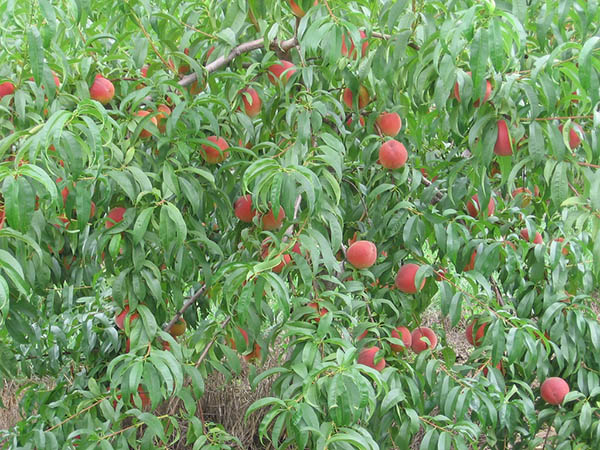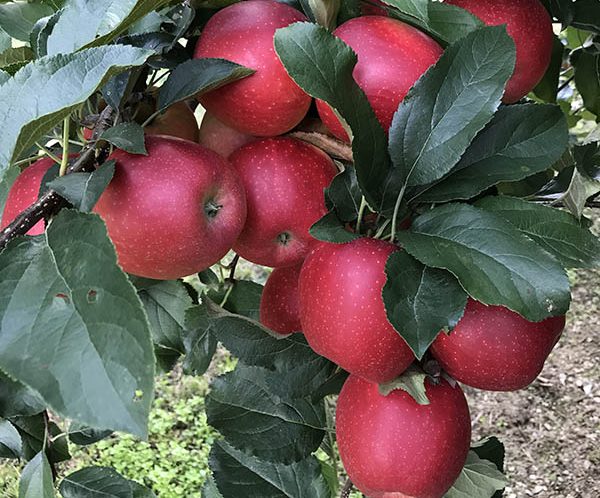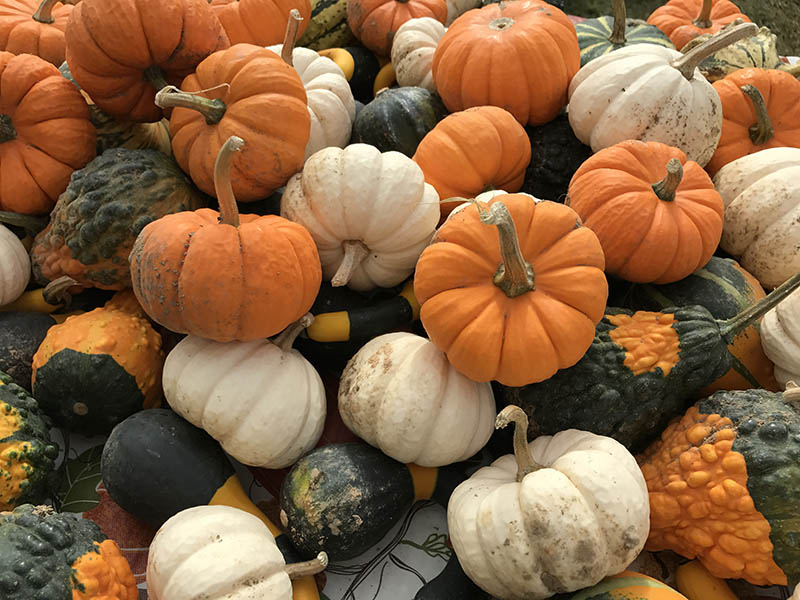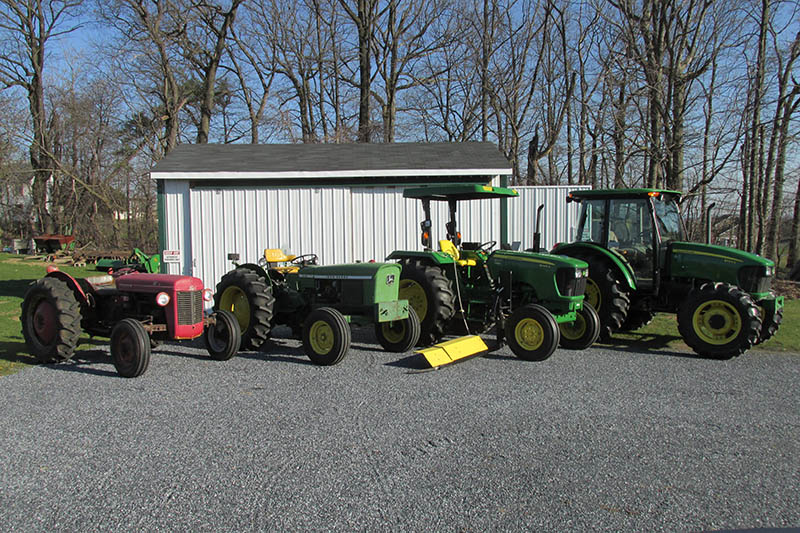- January
Start pruning the apple and pear trees (both of these fall into the family of “pome” fruits). We order our pumpkin seeds and seed potatoes for the coming spring. Shovel snow as necessary; cut into firewood any trees in fencerows or wood lots that are in the way of farming. At the end of the month the annual convention in Hershey is a source of the latest research and products in fruit and vegetable farming.
- February
Continue pruning Pome fruits, cutting firewood and shoveling snow. Pruning removes dead limbs and other branches that don’t fit the shape of tree we want. We take out vertical limbs (besides the center trunk) and branches that rub or shade out those we want to keep. The key is to allow sunlight into every part of the tree left after pruning.
- March
Start pruning the peach, apricot, cherry and plum trees (these all fall into the family of “stone” fruits). The basic concepts of pruning are the same as with the apples, but we are creating a totally different tree shape. The peach trees have an open center or “open vase” shape. The apples have a “central leader” shape. Peach trees can grow so much in 1 year that we are cutting single uprights off now that are bigger than the whole bare-root tree that we originally planted!
- April
Continue pruning Stone fruits. When we finally finish pruning, we have to pick up the largest cuttings and chop the rest into chips with the flail mower. Plant any new trees, typically on Easter weekend. We use a tractor-mounted auger to dig an individual hole for each tree. Then we set the bare-root tree in the hole (make sure to prune the roots to promote growth) and backfill. That’s how we planted all 1,200 trees. Pennsylvania Dutch legend holds that bull whipping the peach trees on Good Friday will result in a bigger crop. Plow the vegetable fields if the ground gets dry enough. April 15th is usually the last day to worry about frost and that’s about the time we schedule our honey bees. By the end of the month, all the trees are in bloom and the bees are very busy. We are watching the weather closely – especially the overnight low temperatures. Rainy, cloudy weather can keep the bees from visiting flowers and a late freeze can destroy to tender flowers or newly pollinated fruit. Fertilize the trees before the grass starts growing.
- June
If it wasn’t already done in May, mow the grass in the driveways between the trees. The leaves on the trees are a dark green now. Hill the potatoes so there is adequate soil covering the growing tubers. Any fruit that didn’t fully pollinate will fall victim to the “June Drop”. It shrivels up and falls off the tree. What’s left hanging on the peach trees will require “thinning”. A peach tree sets up a lot more fruit than it can handle. If left untouched, each peach will be too small, and the combined weight can break branches. Thinning is the manual process of picking about half the little fruits off the tree to allow the remaining peaches to reach acceptable size and still be supported without permanently damaging the tree. At this time of year, the peaches are hard green fuzz balls, only slightly larger than a mature peach pit. We use thinning as a way to remove peaches that are misshaped or have been visibly damaged by insects or disease. Thinning is the beginning of the busy season, even though we are not open yet. At the end of the month the first cherries will be ripe.
- July
Finish thinning peaches finally. Mow the grass one more time before we start picking. Continue picking cherries during the first half of July, with the plums and apricots ripening during the second half of the month. Now we are in the thick of it – the market is open and we are picking fruit. All the hard work of the first 6 months is literally bearing fruit.
- August
The Redhaven peaches ripen either the first of second weekend of the month which starts our 5-week peach season with a new variety offered each successive week. Our potatoes are planted so they are ready to dig at the start of peach season. The first pears are ripe by the middle of the month.
- September
Labor Day is the transition period – peaches are winding down and apples are starting up. The cool nights give vibrant red color to our apples. The brisk weather is a welcome change from the heat of summer. The pumpkin vines start to die back, revealing the orange mascots of fall for us to start picking.
- November
We sell the remaining apples, potatoes and edible pumpkins on the weekends leading up to Thanksgiving. We mow the grass one last time. Tall grass gives rodents a place to hide in winter and they can chew the bark off the base of tree trunks. We service the tractors after a season of work: change the oil and filters and any other routine maintenance.
- December
I guess this is our slow month. We get as much of the equipment under cover as possible before any winter weather hits. We take a break and look over the past year – what worked and what didn’t. What will we do differently in the coming year? The seed and tree catalogs come in the mail providing all sorts of new ideas.


